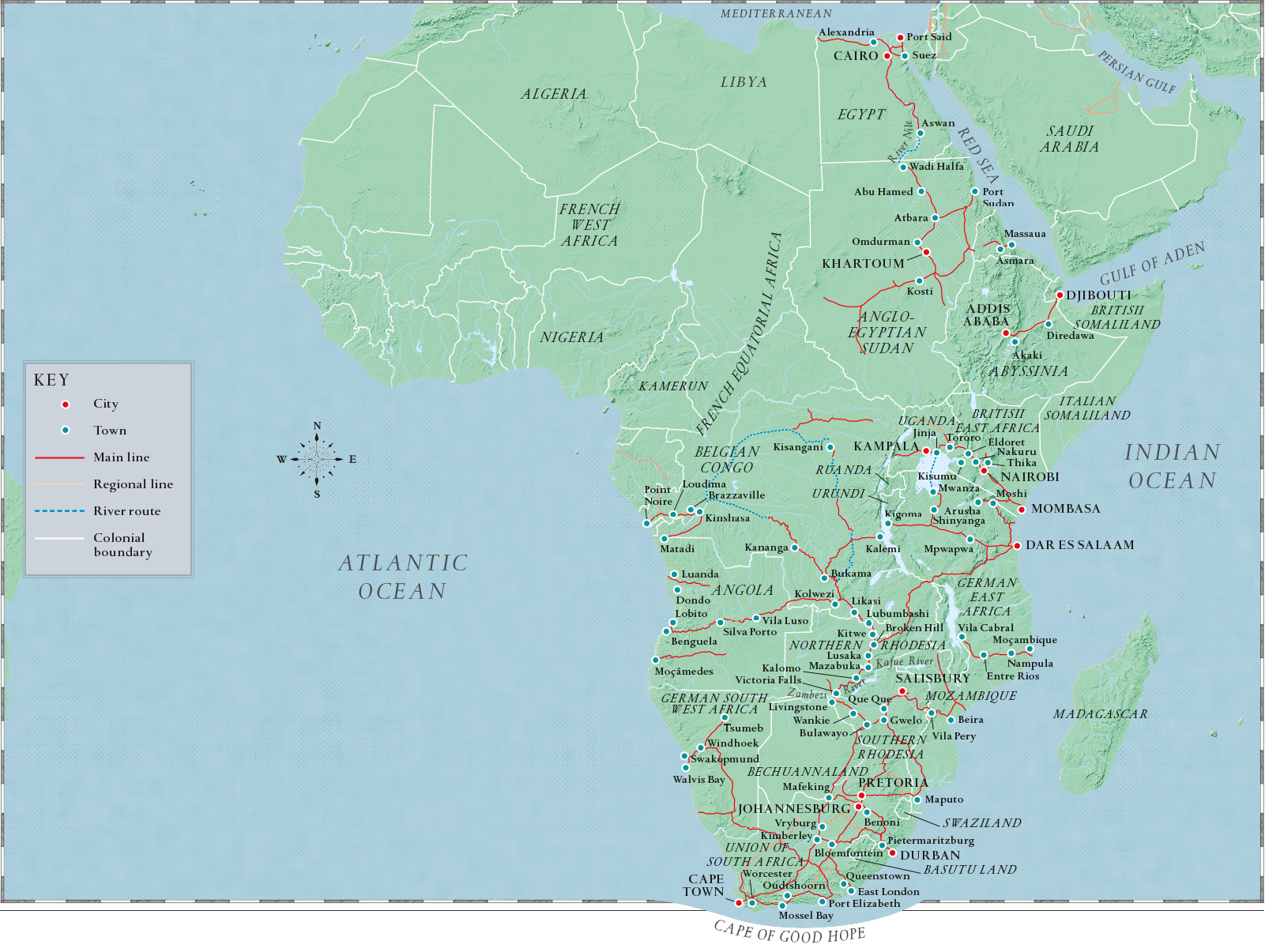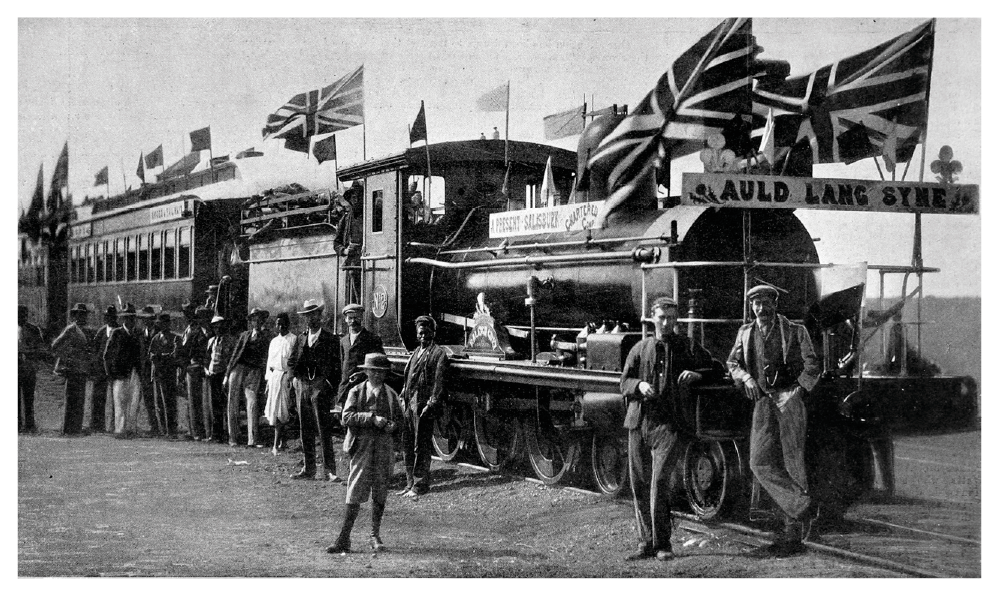A Victorian imperial ideal with the goal of opening the African continent up to commerce, Cecil Rhodes’ ambitious plan for a north–south railroad across British colonial Africa was never fully realized. The challenges of the terrain, local opposition, and a lack of finance to meet the huge material demands of laying iron rails across mountain, jungle, and desert meant that, by the close of World War I, pragmatism had overcome idealism. Africa’s abundant natural resources of diamonds, gold, and copper became the main destination of its railroads. This map shows the sections of the Cape to Cairo line that were completed between the 1880s and the 1920s, and its connecting railways.

line opening
A branch of the Cape to Cairo line from Beira on the Mozambique coast to Salisbury (now Harare) in Northern Rhodesia (now Zimbabwe) opened on June 19, 1899. The arrival of the first train in Salisbury was celebrated by the line’s engineers, George Pauling and Alfred Lawley, with British imperial pomp.
